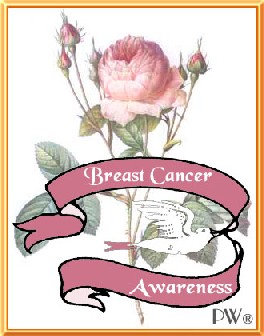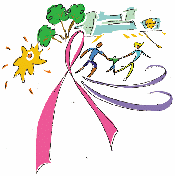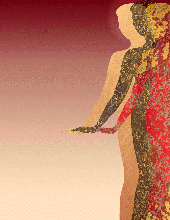Become Breast Savvy - Learn the ABC of Breast Awareness |
October is the month dedicated to breast cancer awareness around the world. The reason being, it is the most common cancer among women. Few health issues facing women have received more attention than breast cancer in recent years and with good reason. The average woman\'s chance of getting breast cancer is one in 200 by the age of 40, one in 50 by the age of 50 and 1 in 11 by the age of 80. Although these numbers might sound frightening, early detection can improve the long-term survival rate.  Breast health Every woman should be breast aware throughout her adult life. It is an important part of caring for your body. Being breast aware means knowing how your breasts look and feel normally, so that you notice any change that might be unusual for you. Detecting a change early means that if cancer is diagnosed any treatment may well have a better outcome. Most breast changes will prove to be benign (non-cancerous), but you should always report any concerns to your doctor.  Becoming breast aware Breast awareness is about becoming familiar with your normal breast tissue and how it changes, for example, at different times of the month. Get into the habit of breast self examining (BSE) regularly once a month. One way of looking is by using a mirror so that you can see your breasts from different angles. You may find feeling your breasts is easier to do with a soapy hand in the bath or shower, or you may prefer to do it lying down. You can decide when is convenient for you and what you are comfortable with.  Know what is normal for you Your breasts will go through many perfectly normal changes throughout your life. They are affected by hormonal changes during your menstrual cycle, pregnancy, breast-feeding, the menopause (change of life) and weight loss or weight gain. The menstrual cycle Each month during your childbearing years, your breasts prepare for pregnancy and breastfeeding. Breasts often become enlarged, tender and lumpy shortly before a period starts, but return to normal once the period is over (although some women may have tender, lumpy breasts throughout their cycle). The menopause Breast tissue changes after the menopause. It is often less dense and firm, and becomes more fatty, making your breasts feel softer. As you grow older your breasts may get smaller. The breast awareness 5-point code: 1. Know what is normal for you 2. Know what changes to look and feel for 3. Look and feel 4. Report any changes to your doctor without delay 5. Attend routine breast screening if you are aged 50 or over. What changes should I be aware of? These are the changes that you should be aware of when you look at and feel your breasts: \u00B7 A change in size - it may be that one breast has become noticeably larger or noticeably lower \u00B7 A nipple has become inverted (pulled in) or changed its position or shape \u00B7 A rash around the nipple \u00B7 Discharge from one or both nipples \u00B7 Puckering or dimpling of the skin \u00B7 A swelling under your armpit or around your collarbone (where the lymph nodes or glands are) \u00B7 A lump or thickening in your breast that feels different from the rest of the breast tissue \u00B7 Constant pain in one part of your breast or in your armpit. Finding a lump A woman\'s breasts go through many perfectly normal changes throughout her life. They are affected by hormonal changes during the menstrual cycle, pregnancy, breast-feeding, the menopause (change of life) and weight loss or weight gain. However, there are changes that you should always go and see your doctor about. They include: \u00B7 A lump in either breast or armpit \u00B7 A lumpy area or thickening anywhere in the breast that feels different from the rest of the breast tissue \u00B7 Enlarged glands under either armpit \u00B7 Bloodstained nipple discharge \u00B7 Any marked change of appearance in a nipple, such as the nipple pulling in or a rash around the nipple \u00B7 Differences in skin texture such as puckering or dimpling \u00B7 A change in the size or shape of one breast \u00B7 Swelling, thickening or persistent pain in either breast that feels different from pre-menstrual tenderness. What should I do if I find a change? You will know better than anyone how your breasts feel and look normally, so if you do notice a change, see a doctor as soon as possible. Don\'t worry that you may be making an unnecessary fuss and remember that most breast changes will be benign (non-cancerous) and harmless. When your doctor examines your breasts she may be able to reassure you that there is nothing to worry about. (If she thinks the change may be connected to your hormones, she may ask you to come back at a different time in your menstrual cycle.) Support the Breast Cancer Fundraising Sameera Al Hashimi  HS-4 |